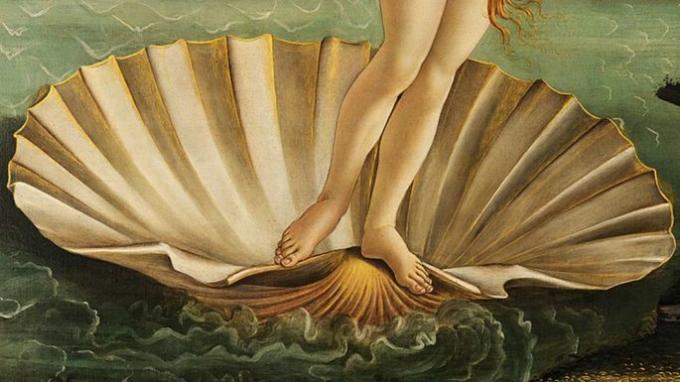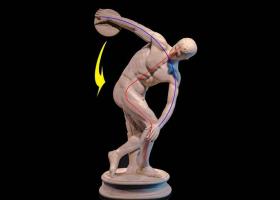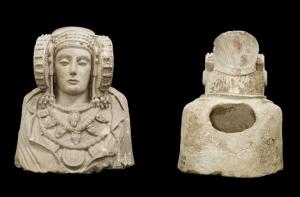Meaning of the painting The Birth of Venus
Picture The birth of Venus or La nascita di Venere by Sandro Botticelli was painted between 1482 and 1485, in the historical context of the Renaissance. It is the first canvas painting painted in Tuscania, Italy. The work measures approximately 1.80 meters high and 2.75 meters long and is currently in the Uffizi Museum in Florence, Italy.
The birth of Venus is part of the sensitivity of the Renaissance, a time when the representation of myths was renewed of Classical Antiquity, in which the Renaissance found hidden truths about nature human. This meant a true defense of anthropocentric humanism against the theocentrism of the past.

Thanks to the social power of the Medici family, the artists under his protection were able to work mythological commissions without the Church being able to prevent it. Thus opened the time of the secularization of culture.
One of the most important mythological figures was that of Venus. But what does it represent
The birth of Venus by Sandro Botticelli? What is the meaning of Botticelli's birth of Venus?Frame analysis The birth of Venus
Botticelli was commissioned by Lorenzo Pierfrancesco de 'Medici to represent the story of the birth of this pagan goddess, a deity that finds her equivalents in the Egyptian goddess Isis or Iemanjá in Umbanda, among other
The scene on Botticelli's canvas is inspired by this figure. The works that could serve as a reference to Sandro Botticelli in The birth of Venus They are varied, although there are controversies among experts. These are:
- the poem by Angelo Poliziano (1454 - 1494), a protégé of Lorenzo de Medici;
- Homer's hymn (1488) published by Demetrio Calcocondilas (1423-1511);
- the play Metamorphosis, written by the Roman poet Ovid (43 BC) C. - 17/18 d. C.), which describes the Greek myths of the creation of the world from the elements to the mutation of the gods into mortals.
The myth of the birth of Venus
The myth tells that Saturn (Cronos), god of time, tears and throws the genitals of his father Caelos (Uranus), which fertilizes the sea. The friction of the foam engenders Venus which, with the help of the wind, is transported to the shores of the island of Cyprus in a seashell. There, she is taken by ‘the Hours’ to the place of the ‘Immortals’.
Description of the box The birth of Venus
From an iconographic point of view, the features of the picture The birth of Venus more important are the following.
Characters

The characters that appear on the canvas The birth of Venus by Sandro Botticelli are Venus, Céfiro, Chloris and the allegory of the Hours.
Venus she stars in the center of the painting, posing naked on a shell that has brought her to shore. Her body lies in a sinusoidal line. A somewhat disproportionate neck supports the head that leans to the left, while the hip is directed to the right.
Her long, thick mane floats in the air. The extension of her allows him to use it to delicately hide her "shame", while one of her hands rests on her chest.

To the left of the canvas are two characters grouped in pairs. Is about Zephyr, the god of the wind, and his wife Chloris, goddess of flowers, who drops some on the scene. Both gods are represented with wings, floating in the air, dressed in cloaks that cover their private parts.
Zephyrus blows over Venus and carries her to a safe shore where a woman awaits her. It is an allegorical allusion to the Hours, the three goddesses of the seasons. This woman, located to the right of the canvas, wears a white dress printed with flowers, ready to warm Venus with a flowery cloak on a pink background.
The anatomical composition
The bodies are represented with some deliberate inaccuracies, since Botticelli's purpose was to build a balanced and harmonious composition.
With this, the artist manages, in effect, to create a model of beauty that will accompany humanity to this day. The Birth of Venus Botticelli's is, in a way, the birth of an idea of femininity within Renaissance art.
The landscape or scene location
The background landscape has not been worked on in detail. In fact, the treatment of the sea foam and the shine of the water breaks the illusion of spatial depth, best achieved in the wooded landscape shown to the right of the canvas.
Only interested in providing context to the scene, this apparent pictorial neglect forces the viewer to focus their gaze on the characters.
The seashell

Within the iconography of art, the seashell on which Venus is held on the canvas is a symbol of female fertility. In the case of this painting, as something very typical of the Renaissance, the shell is also the symbol of the personal rebirth that virtue brings with it.
Meaning of the box The birth of Venus by Sandro Botticelli

The pagan goddess Venus (or Aphrodite, for the Greeks) has been the symbol, since time immemorial, of fertility and eroticism in Greco-Roman mythology. She is a character characterized by overwhelming eroticism about and by others, and for being a woman with a voice of command, firmness and intelligence.
Now, taking that into account, how to interpret Botticelli's work in the light of the Renaissance? Would she have the same meaning that the ancient Greeks and Romans gave her?
Picture The birth of Venus He was famous because, defying the customs of his time, he legitimized the representation of the full-body female nude in art. This was not very common in the past, although it had already been done in some pieces for moralizing purposes.
In fact, it was not common even in Greco-Roman art, where it was the man who was represented completely naked and, in case it was a woman, normally only her torso of her.
Even so, in ancient times there were some cases such as the Aphrodite of Knidos or Venus of Knidos, sculpted by Praxíteles around 360 BC. C., of which only a Roman copy remains.
The Venus of Knidos, like that of Botticelli, is framed in the type of Modest venus that, after the birth and revelation of her, hides her intimate parts from the human gaze, as corresponds to a virtuous woman.
Thus, despite a certain daring, Botticelli justifies the nude from a philosophical point of view, appealing to the Neoplatonism by Marsilio Ficino that enshrines virtue as a supreme value.
It may interest you:
- The 25 most representative paintings of the Renaissance
- Sculpture The Venus de Milo



